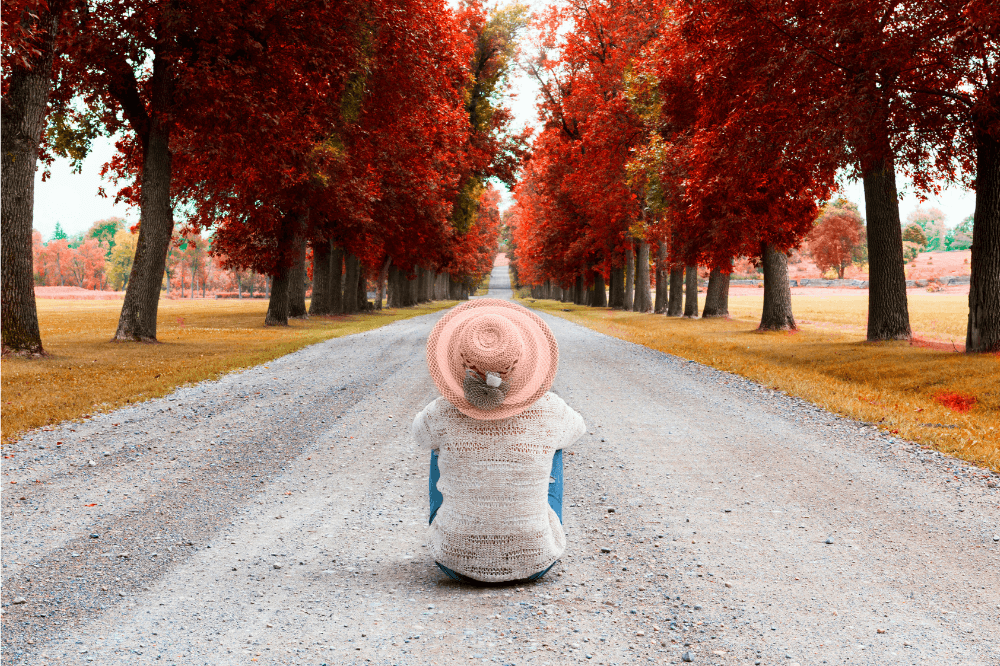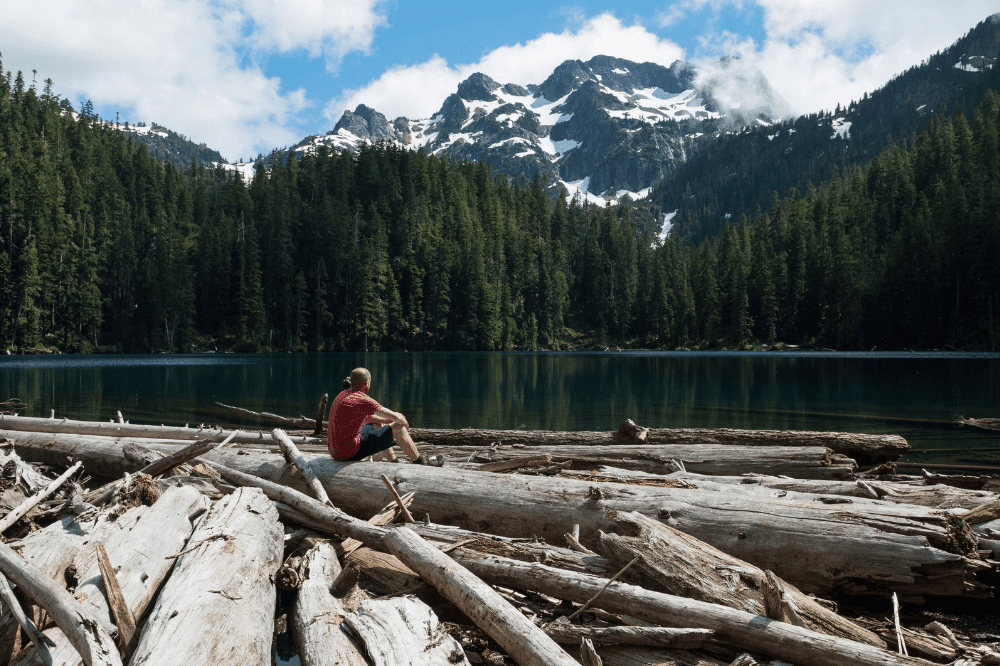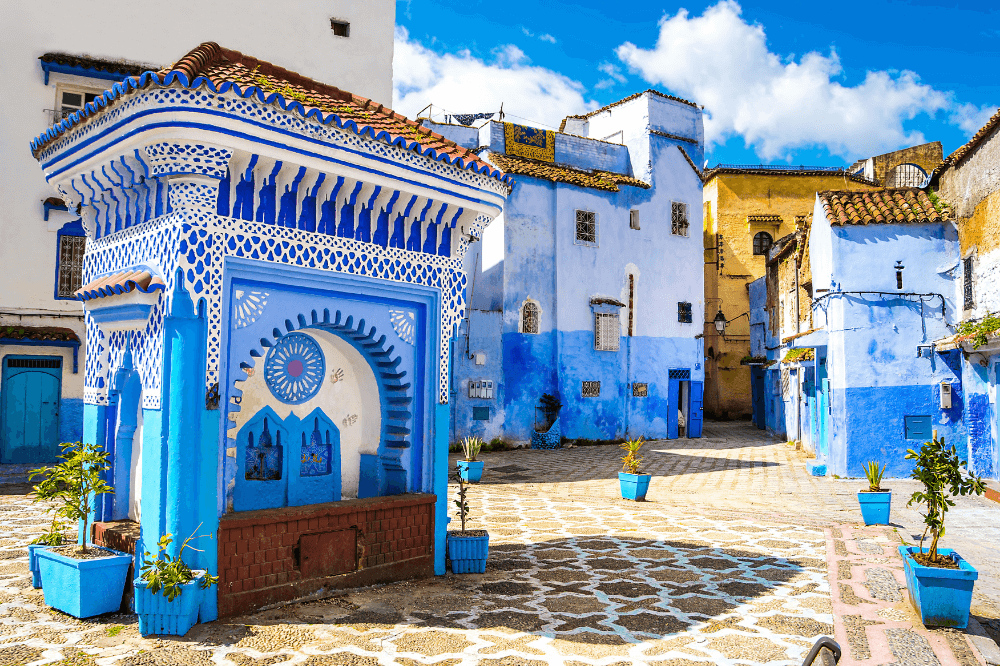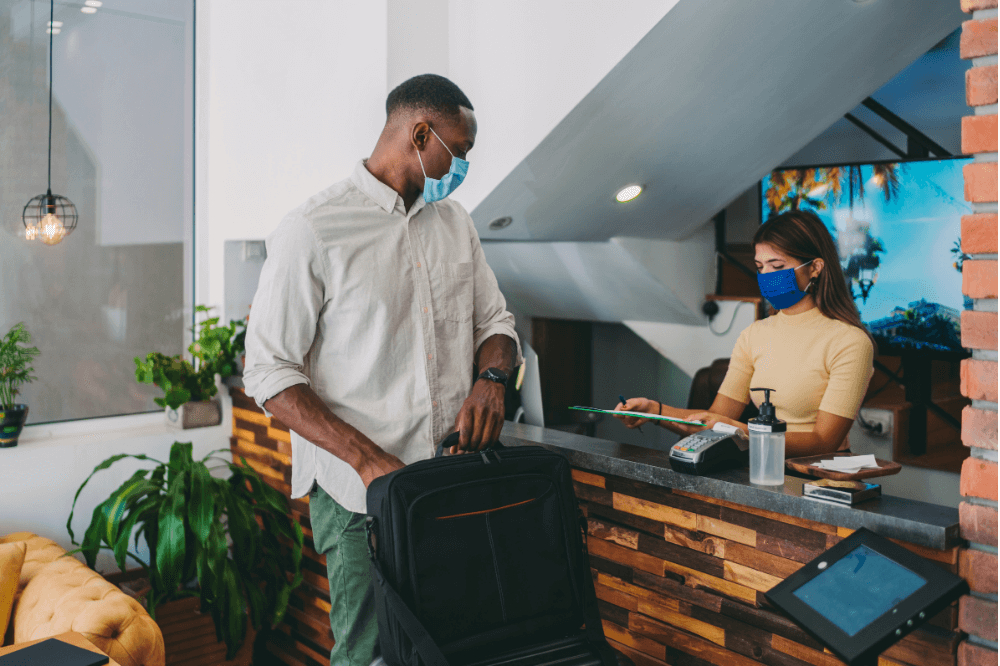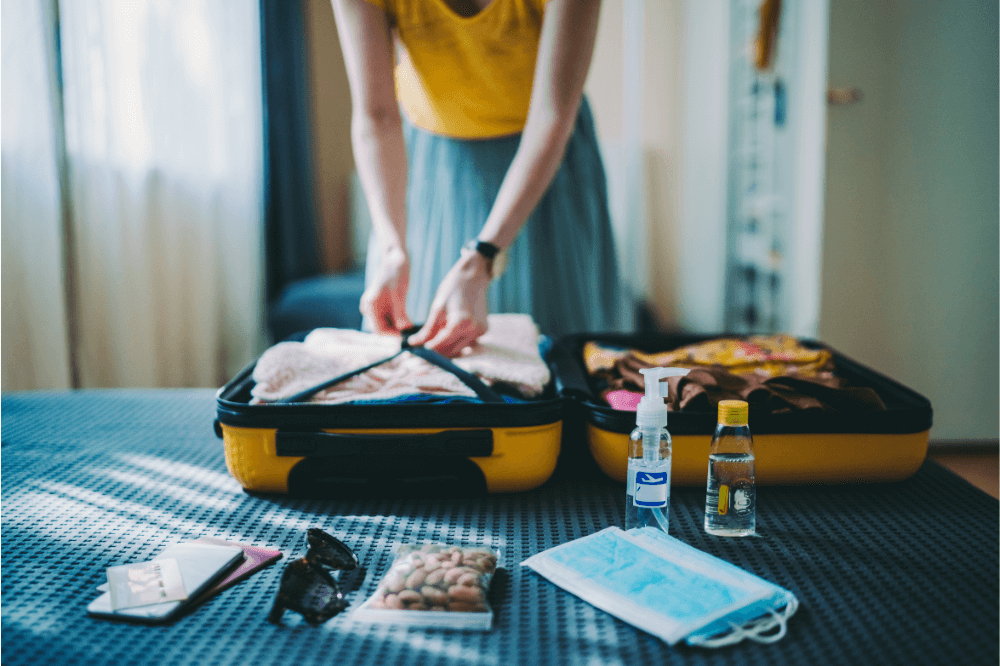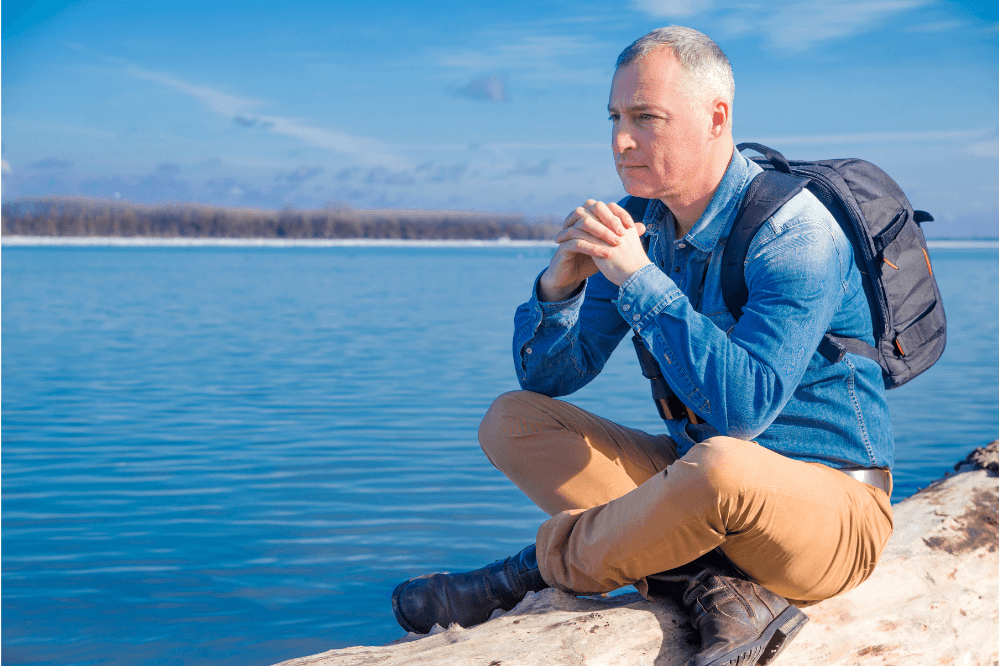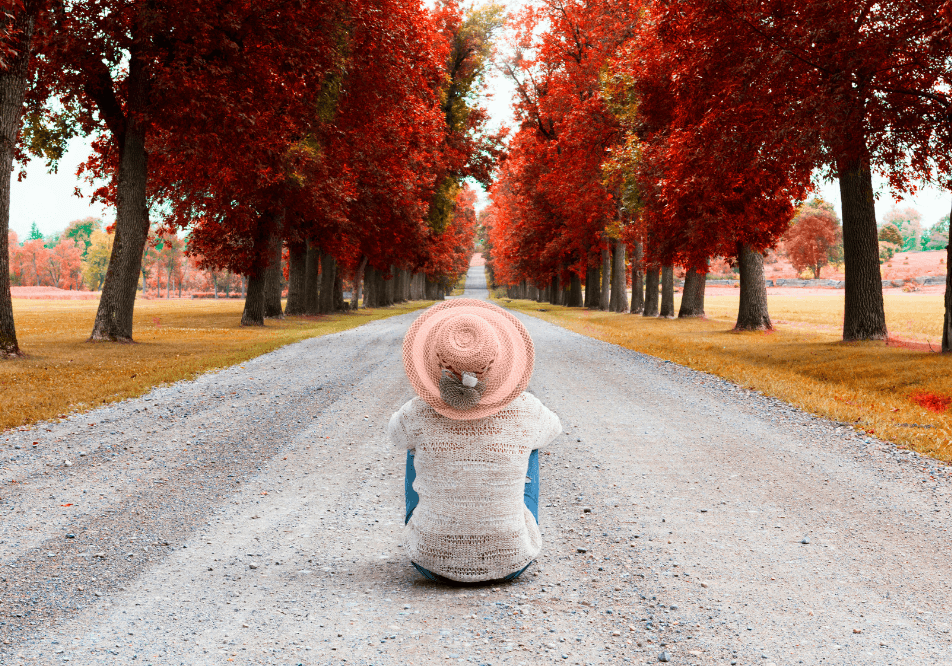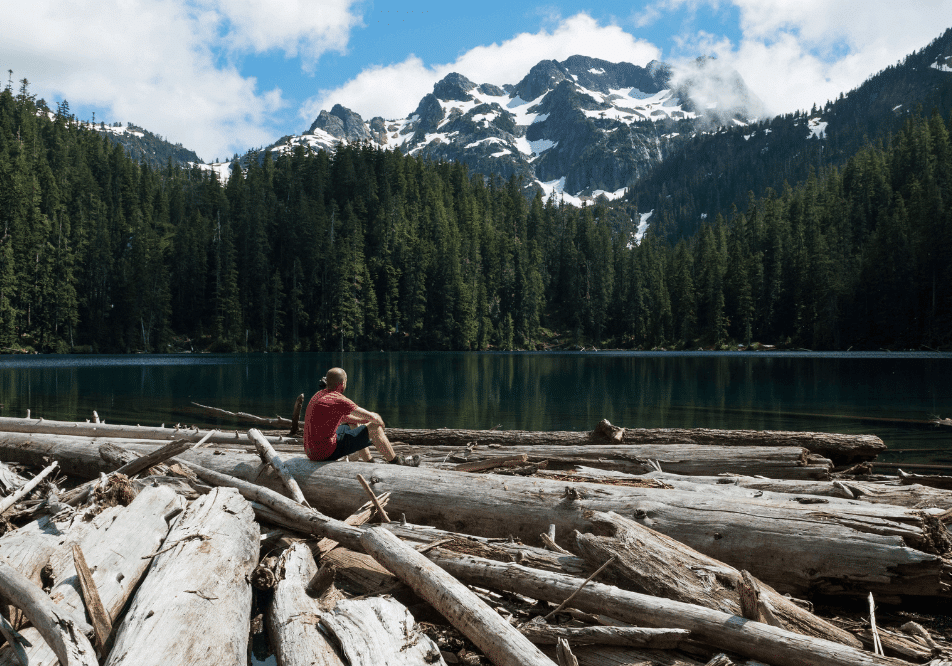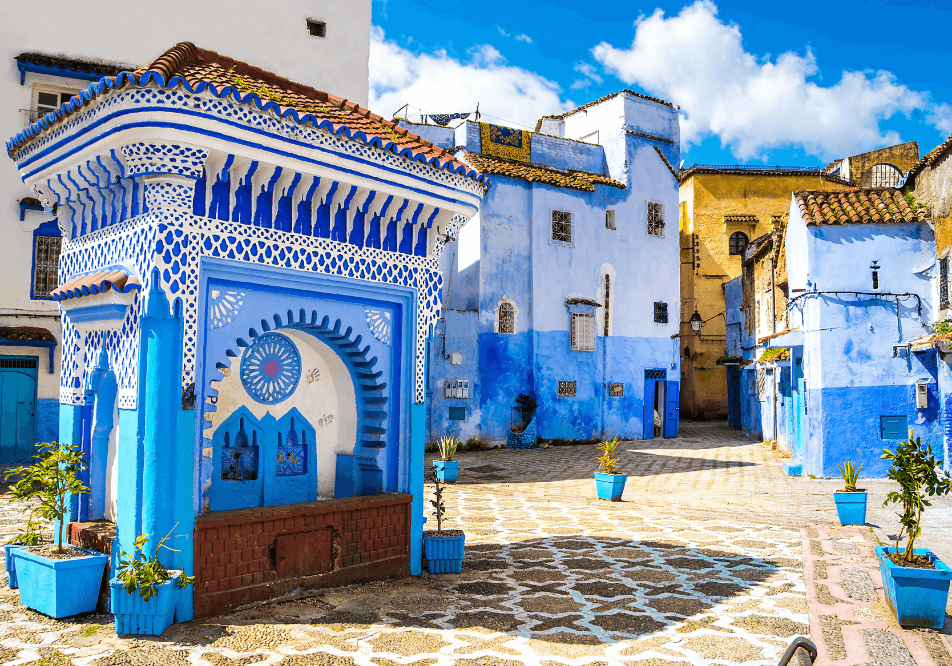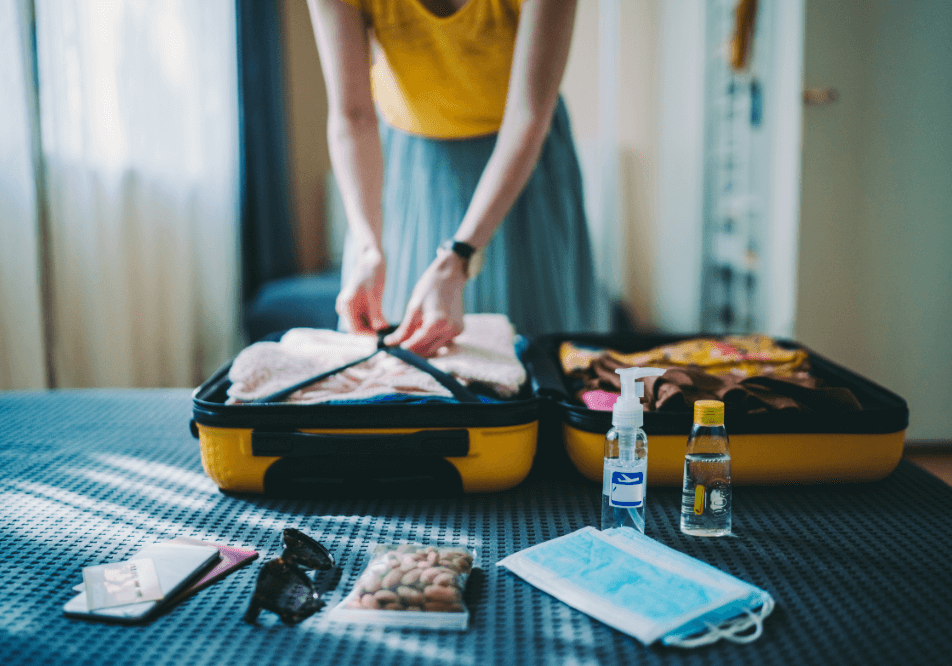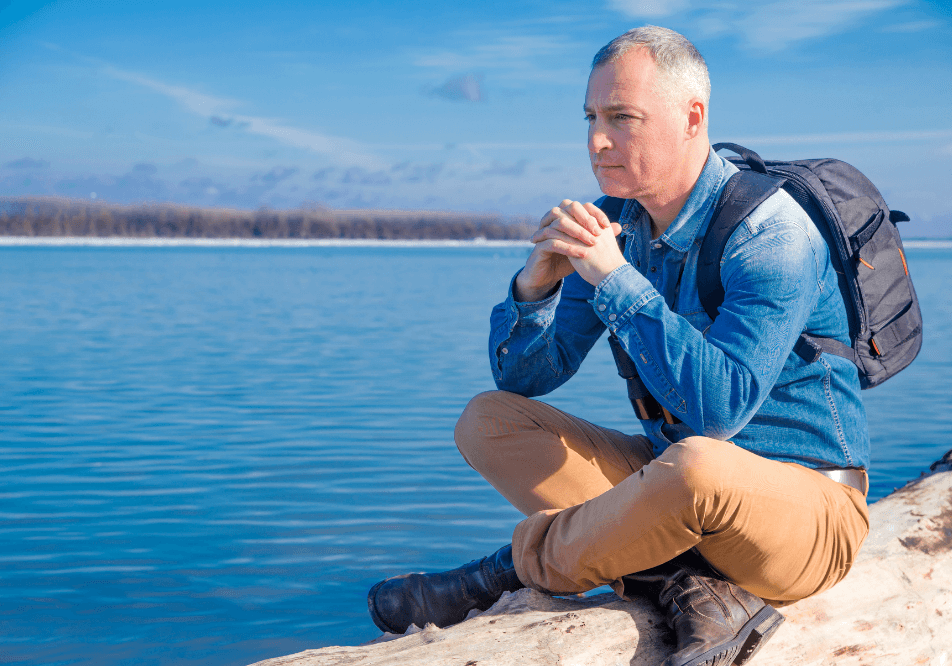Wander backpacking itineraries:
South East Asia
By Wander Team | 26 minutes read
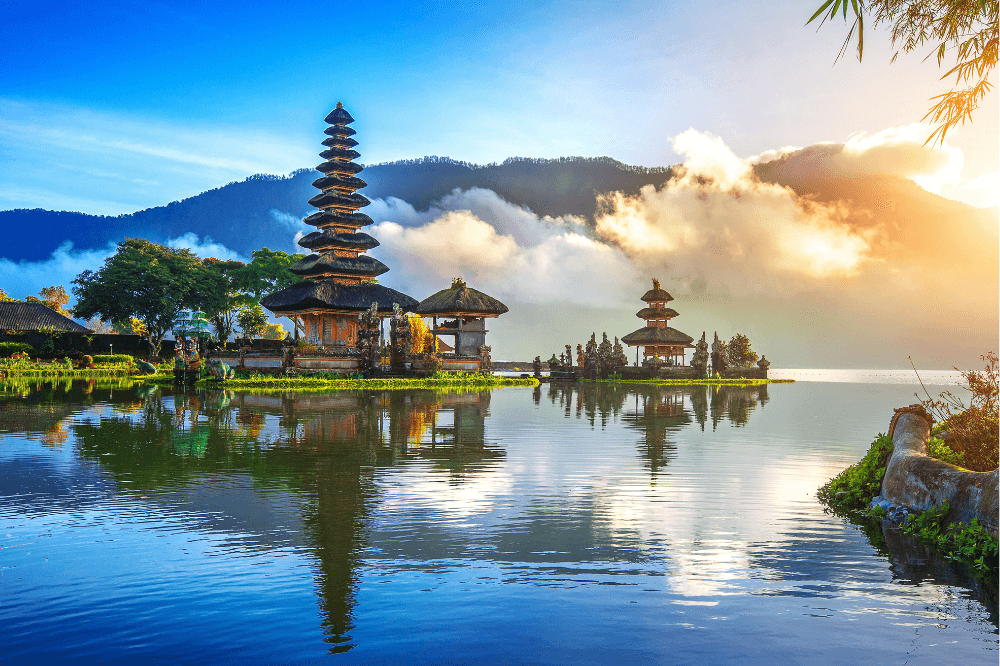
For the better part of the past decade, SEA has seen a sharp increase in tourism related activity, due to its relatively low cost of living, untapped nature areas, and a traveler-friendly environment.
What makes South East Asia a renowned backpacking location?
When evaluating a country, according to a tourism attractiveness scale, plenty of factors and statistics come into play. Among these, for example, what comes into account is a widespread worldwide recognition: while most people have already heard about US or Japan at least once in their lifetime, some of them will go their own life without ever getting the chance to know where countries such as Eswatini or Suriname are located on the world map. Other helpful criteria to take into consideration when estimating the touristy allure of a country are: how well internationally connected (number of flight connections to/from different nations) it is; how safe it is recognized; number of tourist attractions and/or historical landmarks; natural landscapes; quality of food; and so on.
To get the most out of their own resources, and to catch up with the past decade's travel boom, now like never before world governments are taking a remarkable approach to ensure that they are able to offer the most out of tourists's overall experience, and to make them want to come back once again.
South East Asia tends to fill the gap between it being a politically stable region of the world, not being particularly torn by internal conflicts, being relatively safe for travel, however, the main reason why it is capable to attract scores of millions of tourist around the world yearly is a combination of low living costs, mouth-watering cuisine; the presence of tropical landscapes such as pristine beaches with crystal clear sea water, as well as luxuriant glimpses of rainforest and unbeatable jungle views, marked by spectacular middle-sized waterfalls; countless remote small and large sized islands; a relatively traveler-friendly population; cheap flight connections among its capitals; and the abundance of outdoor and local activities that one can partake.
And while most of SEA countries have created a collateral community alliance to join forces, that goes under the name of ASEAN, which makes it particularly easy for locals to get around the region, there is still space for internal marginal growth.
For the aforementioned reasons, it is no wonder that adventure seekers and holiday makers alike are slowly crowding the area. Thus, the steady worldwide recognition that has led this region to establish itself as the most favorite backpacking itinerary in the world - for youngsters and seniors alike. Let's take a deeper look and make a breakdown of the most relevant countries that belong to it.
1. Singapore
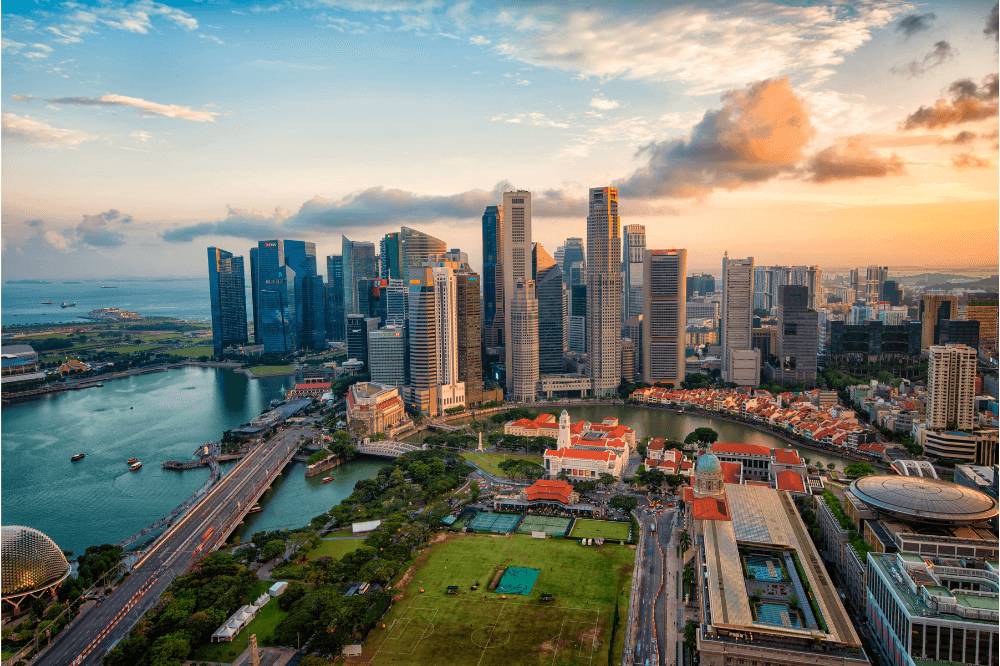
According to statistics and researches, Singapore constantly ranks in the top spots for different indexes, such as most competitive global economy, ease of doing business, safety, and human development. It is also slowly set to become an international tourism hub, experiencing a steady year-by-year growth of international arrivals. Lying on the southernmost part of the Indo-Chinese subcontinent, marked by a humid tropical weather all year long, this city-state is characterized by its world-famous city skyline and marina; a modern fusion of Chinese and Western environment and streets; a highly developed financial hub; local cuisine that blends various SEA countries' tastes; all this while still remarking and retaining its historical and cultural heritage and charm.
For the new-in-town backpackers, there are just countless itineraries to explore and activities to join, that will allow to get the most out of the visit. Landing to Changi International Airport is by far the most popular way to get into the country for overseas travelers, however, if you're arriving from a neighbor country such as Malaysia, you might want to consider hopping on one of the daily regular bus rides that link Singapore to the Malaysian capital, Kuala Lumpur, for an inexpensive amount of money. This will allow you not only to take a few coffee breaks here and there, but also to enjoy and admire the tiny villages and municipalities in between the journey, which somehow recreates the original lifestyle of the ones living in those territories. In this case, the bus will drop you in Singapore downtown. In case you land at the main airport, daily MRT runs ensure international and domestic passengers a smooth, fast, and cheap commute from and to to the city center.
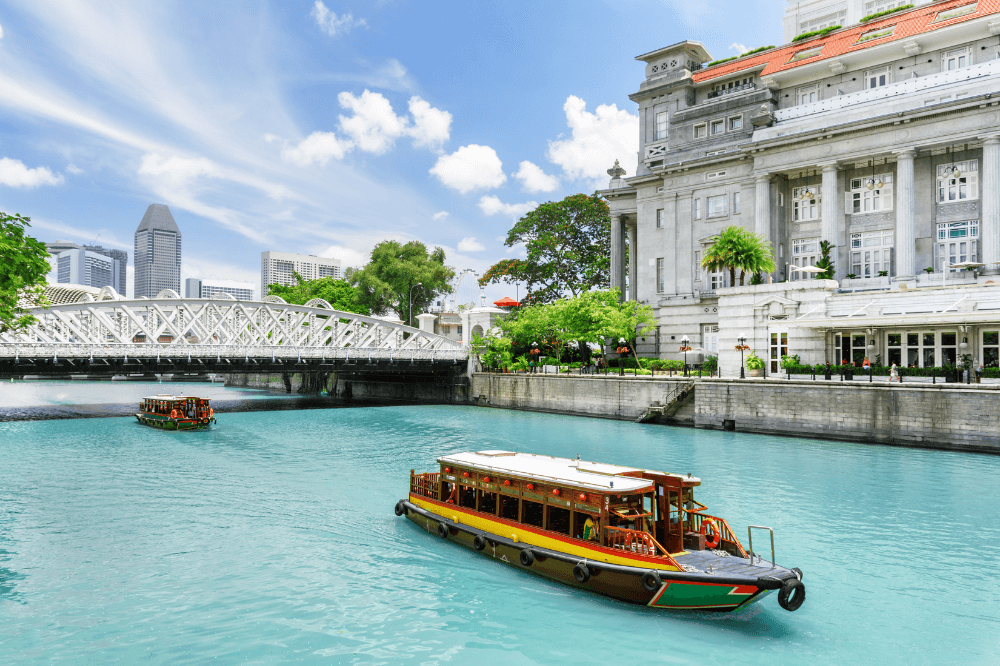
Once in town, you might not want to miss the main landmarks and famous buildings and views, such as Marina Bay, Gardens by the Bay, and Botanic Gardens. If you'd like to leave overcrowded tourist spots behind, there is no shortage of lesser known places. Jurong Bird Park, Ubin Island, Southern Ridges, and Chinese Park are just some of them. If you happen to be a foodie, there's just something for you that suits your taste buds. Although most of the dishes are rice and noodles based, there is definitely no shortage of exotic foods, such as Western and South American. Some of the most popular dishes include Nasi Lemak, Satay, Laksa. The country is internally and efficiently connected by a wide transportation system, meaning that you are most often less than a 20 minutes bus or train ride away from your destination. Main activities include visiting the city zoo, Universal Studios, having a stroll at Orchard Road, and taking a ferry ride to Sentosa Island.
2. Malaysia
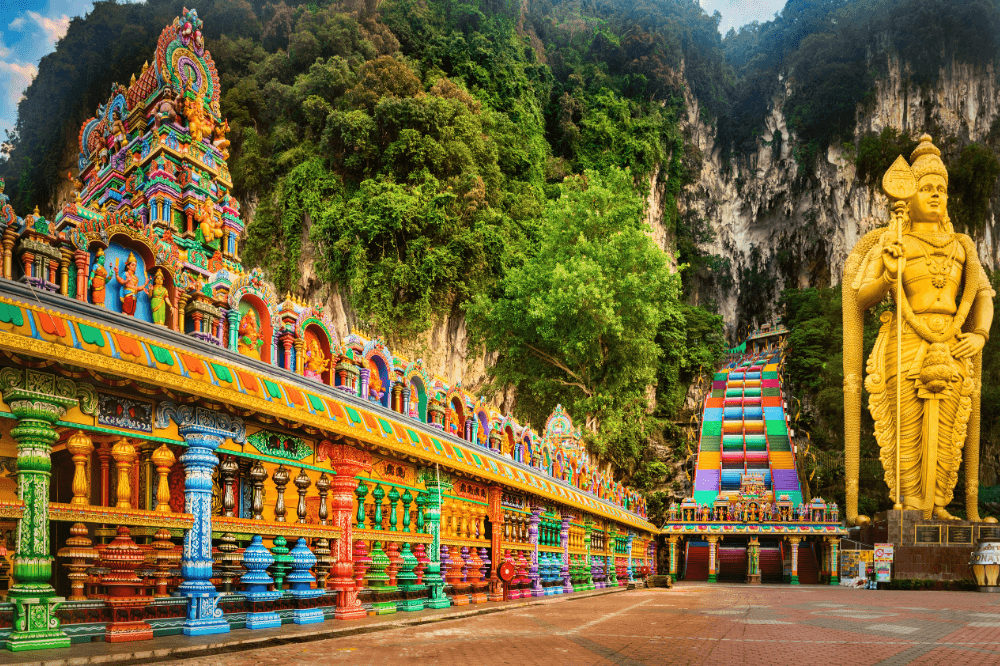
The Malay Peninsula lies in between Thailand and Singapore, and represents a mix of Indian, Chinese, Western, and indigenous cultural heritage. Each year, a few millions of tourists get to visit Malaysia; this country is the primary example of a well established multicultural environment where multiple ethnicities get to co-live peacefully and in integrated way. If you're traveling in neighboring countries, it is quite simple to reach its capital city, Kuala Lumpur, by any means of transportation. If you're arriving from Singapore, the most logical thing to do is getting to explore the country from South to North; if coming from Thailand, then your best bet will be heading southbound. If you're arriving from overseas, then KLIA (K.L. airport) is the most important airline hub in the state.
In our case, we'll refer to an hypothetical backpacking itinerary that stretches from North to South. Nearing the Thai border, the two islands of Langkawi and Penang are very well-knows tourists hotspots, the latter renowned for its colonial British style architecture, combined with an unspoiled untouched nature. On the North East side, instead, lies Redang Island, part of a small Archipelago, which gets attention for its unspoiled beaches, crystal clear water, and is home to a handful of resorts.
Heading south, we'll come across the city of Ipoh, the fourth largest city in Malaysia. Home to British colonial style buildings, the city is also famous for its local cuisine and nature. Its main architectural landmarks are Jalan Tun Sambanthan, City Hall, and Perak Tong temple.
A couple of hours driving East, lies the oldest Malaysian National Park, Taman Negara. Proceeding down to the central region, we finally set foot in Kuala Lumpur. If you're keen to explore as many places as possible, having a 7-10 days stay will give you plenty of time to move around, and to let you in a rush. It goes without saying that its postcard skyline include the iconic Petronas Tower, where you can actually get to visit the interior during opening hours, and, by paying a small fee, you can get up to their rooftops and a walking bridge interconnecting the two buildings.
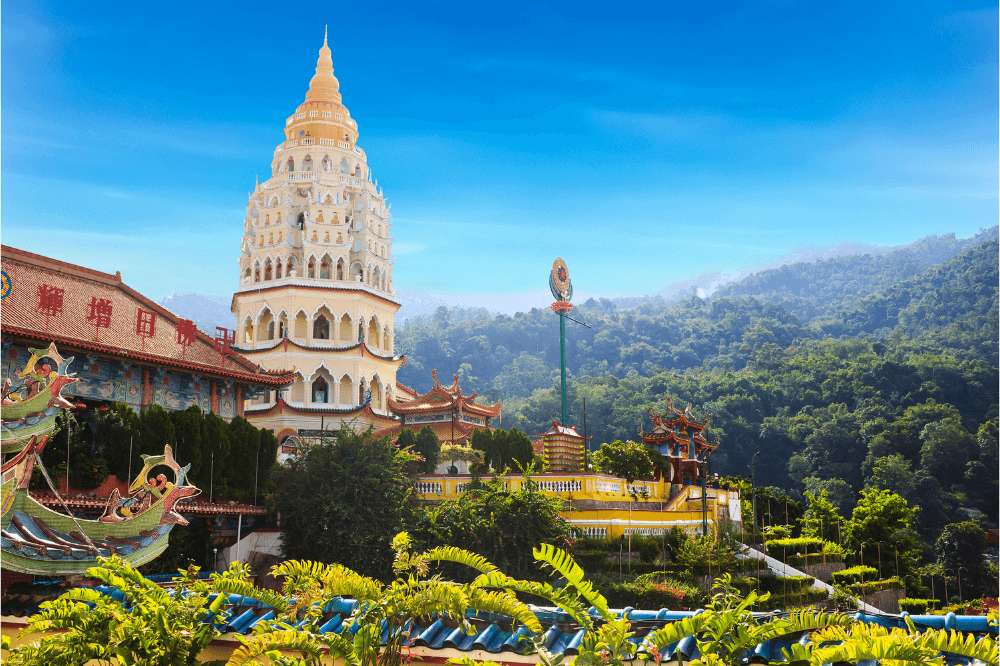
Popular landmarks include: City Zoo, Chinatown, Sri Mahamariamman Temple, National Mosque, Istana Negara, and the colorful Batu Caves. Riding further towards south, we finally approach Malacca City. capital city of its namesake region. The city presents itself as a landmark influences by Sino-Portuguese heritage, and a 3-day stay will help you cover all the main attractions. To make commute between places more convenient, local trishaws are on service. Among the most preminent buildings, Malacca Sultanate Palace, Malacca Syariah Court, Cheng Ho Cultural Museum, Cheng Hoon Teng temple, British Queen Victoria's Fountain, Governor's Museum, and the presence a city Zoo.
Before completing your backpacking itinerary by visiting the southernmost region of Malaysia, Johor, we recommend having an hiking experience inside Endau Rompin National Park, a protected rainforest and one of the oldest ecosystems in the world, boasting rock formations which are hundreds of millions old.
3. Thailand
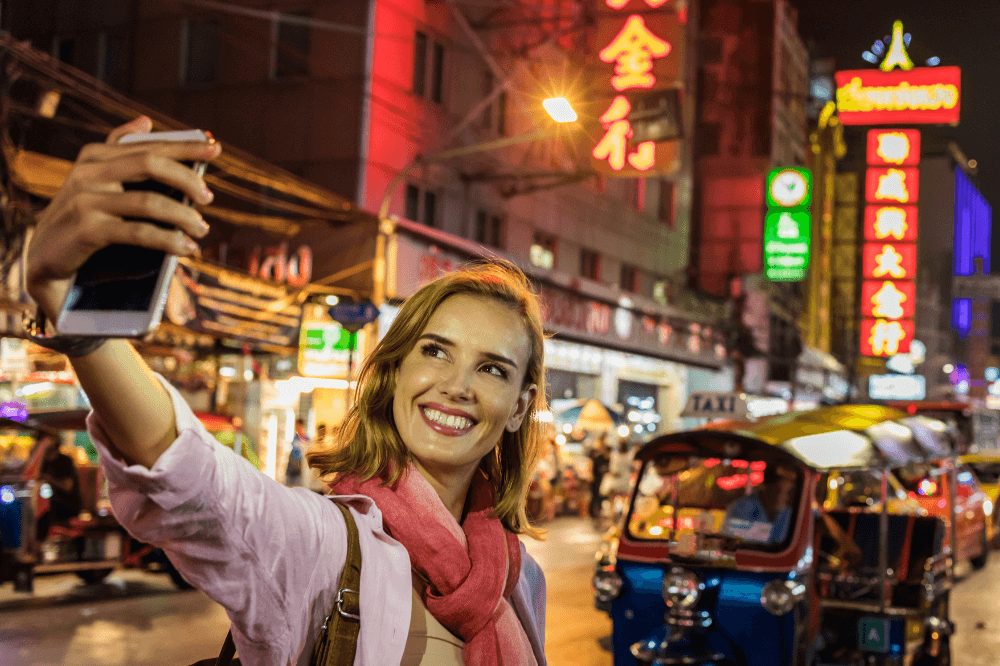
Set to soon rank among the top 5 most visited countries in the world, and first among SEA countries, Thailand is a much beloved and appreciated destination which attracts every year scores of travelers coming from the most different backgrounds, and interested to learn more about its cultural, historical, and religious heritage which characterizes most of its territories. In fact, Thailand is one of the very few countries around the world never to be colonized by foreign invasors. There's just so much to say and explain about backpacking activities in this nation, that writing a whole book about might not be enough to say the least.
Situated at the heart of SEA subcontinent, bordering several countries - Laos, Cambodia, Myanmar, Malaysia - Thailand is the sheer definition and temple of backpacking. Scores of backpackers each year get to explore even the remotest spot and point of interest, on a quest for a pure unspoiled experience. Bangkok - its capital city - and the place where most of people get their trips started, is an international, multicultural hotspot and home to the most extended food and street markets in the world. In fact, you can literally spend a year in BKK, trying a different food specialty every day, and not yet be done with it! The best thing? Providing food for the day can cost as low as 5$, depending on the area. Roaming around the city though sometimes can become quite slow, especially during peak hours, thus it is advisable to get a little familiar with its transportation system before arrival day. There are dozens of means of transportation that suit your needs. If you're a thrill and recklessness aficionado, then you'll find exciting to hop on a motorcycle taxi that can get you at destination at roughly half the time needed for a standard 4-wheeled taxi car. Both services are extremely affordable, however, for some circumstances, you'll find yourself bargaining for a lower price, thus eventually it will all come down to your negotiation skills. If your purpose is to arrive at destination as safely as it can get, you might want to opt in for the extensive network of subways and skytrains that run across the whole city. Be aware though, train station can get extremely overcrowded at times, especially during rush hours, and for heavily populated districts. If you want to do it the traditional Thai way, and don't mind spending an extra amount, then just hop on world famous 3-wheeled Tuk-tuk (otherwise called Rickshaw or Trike). For rural and regional commute, the fastest way is to hire a motorcycle, or hopping on a van converted for people transport. If you want to go the extra mile, get yourself a motorcycle ride.
Thailand backpacking itinerary
Let's start our Thai tour in Bangkok, where we'll be arriving at the main international airport, Suvarnabhumi. From there, there are several ways to get to city. Private vans, taxi, ARL, are the main solutions, listed in order from most expensive to cheaper. A taxi ride to the city will set you 10-15$ depending on the distance. The airport link, though, is as much as 10 times cheaper, and takes about the same duration.
Not-to-miss point of interests include: Yaowarat (Chinatown), Wat Pho, Grand Palace, Khaosan Road, Jatujak weekend market, Ratchada night market, Wat Saket Temple, a stroll through Siam shopping mall district, and hopping on a boat ride through Bangkok narrow navigable canals. Best food to try out: Pad Thai, Pad Kra Pao, Thai Fried Rice with Chicken, Kway Teow, Kaeng Daeng (Thai red curry), Mango sticky rice. However, there are dozens, if not hundreds, more local dishes to explore. Western, Chinese, East Asian food is also commonly available anywhere, from large cities to the tiniest village. 3 days is what most backpackers usually take to get to explore the city.
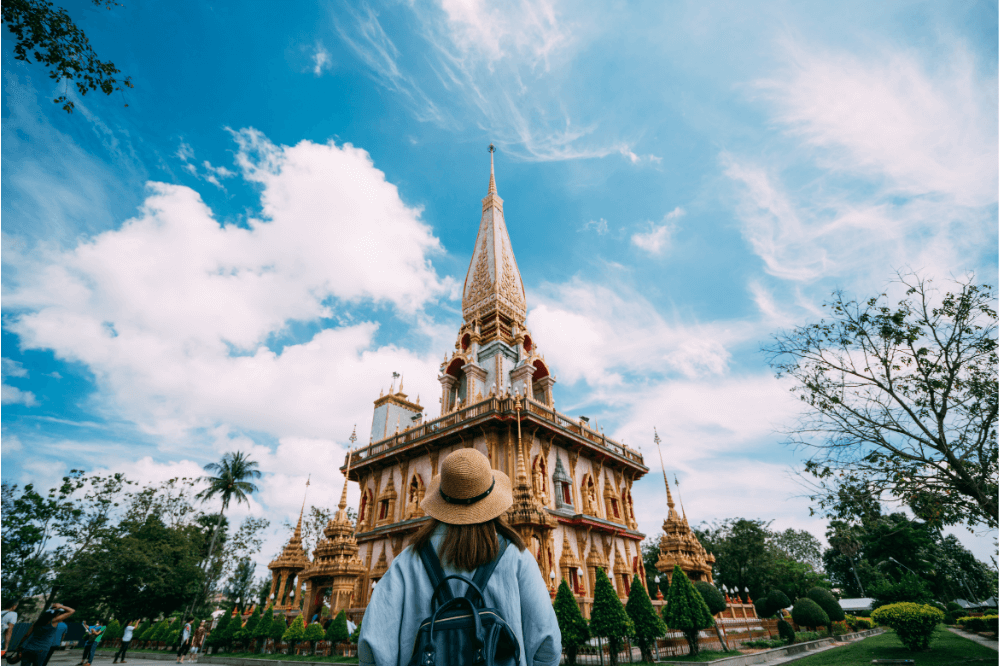
About 50 miles north of Bangkok, lies the ancient capital city of Ayutthaya. It is conveniently connected to the new capital by railway, taxi, private rides, and regular shuttle services. The total journey duration should not take more than a couple of hours, depending on delays and traffic. In Ayutthaya, the best way to move around is by renting a motorcycle/moped, or by hopping on an open end van. Private taxi are also available for hire. What to see in Ayutthaya: the city is home to a relevant number of ancient temples, which were erected during a time span that goes from 1300 to 1600 A.D. A dozen historic sites are available for visit. Ticket prices range from 1$ to 10$. Overall, it a 2 and half day visit should cover every single corner of the municipality.
Heading back to Bangkok, a flight ticket to Chiang Mai/Northern Thailand will ensure you cover Thailand from head to toe. If you don't mind saving an extra dollar, your best bet is to take off at Bangkok's domestic airport, Don Mueang, just 25 km away from the city center, and avail yourself of big discounts on the fare. Bus, taxi, and railway are all efficient ways to drop off at the airport. Backpackers' traditional northern routes covers the 3 tourist hotspots of Chiang Mai, Chiang Rai, and Pai. One of the reasons why they're so popular among budget travelers is their incredible low cost of living. In fact, if you're on a tight budget, you might get away with renting a private room at only 5-7$ per night. These villages offer a glimpse of an untouched traditional Thai lifestyle, where ancient buddhist temples blend with the local vegetation and jungle. Phra That Doi Suthep temple, Wat Chedi temple, Chiang Mai night bazaar, Nimman Haemin road, and Wat Ton Kwen temple make up most of landmarks and attractions. Located up on a range of mountains, Chiang Rai's main tourist attractions include the iconic white Wat Ron Khun temple, Mingmuang Temple, and the Baan Dam museum. Pai, on the other hand, has more of a small village atmosphere, and main activities include a hike in Pai Canyon, and a visit to Chedi Phra That Mae Yen temple.
Before heading towards the Southern Thai region, a few optional stops that you can consider adding to your travel itinerary are a visit to Pattaya on the Mid-Eastern region of Chon Buri (if you're a night life addicted, or just want to chill on a cozy beach); a visit to Kanchanaburi and Erawan National Park (with its iconic waterfall floors) towards the Myanmar border; and exploring the coastal city of Hua Hin, 120 miles south of Bangkok.
If you're in the North, then a 1-hour flight commute will get you to the South. You can opt-in for the same if you're in the Central region, however some popular transportation services also include railway and bus rides departing regularly from Hua Hin and Bangkok Please note that, in this cases, a journey from Central Thailand to the Southern region may take up to 15 hours. The most famous destinations include: the Koh Samui Archipelago, lying on the southeastern side, attracting every year people from every corner of the world, and being popular for their wild parties, crystal clear water, pristine beaches, and a notorious scuba-diving scene; Phuket, a mid-sized island facing the Andaman Sea, and famous for its wild night life, Muay Thai matches, elephant rides, and astonishing jungle views. Day ferry trips to nearby islands are also available upon reservation; the relatively close Koh Lanta, home to a National Park and suitable for the ones looking for a quieter environment, away from the tourist crowd hustle and bustle; Krabi and the Phang Nga bay, a few hours drive from Phuket; and Hat Yai, not too far from the Malay border. However, this list really makes no justice, as there are literally dozens of islands and parks that are well worth a visit, and can be reached by regular ferry rides. In the end, it all comes down to your budget and time availability.
4. Laos
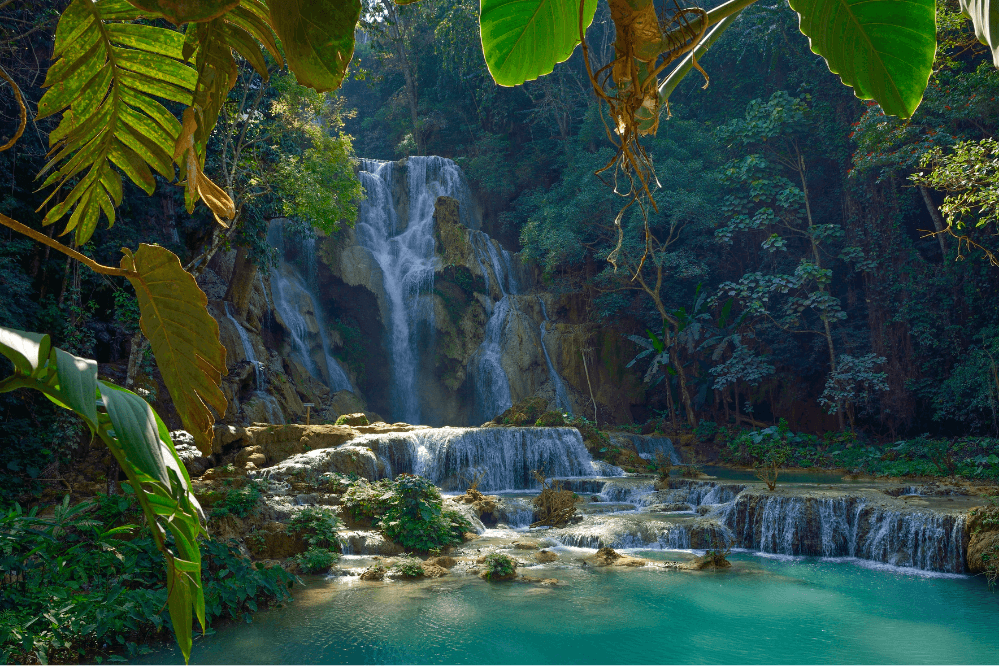
The Lao People's Democratic Republic, or, shortly, Laos, is a socialist nation covering part of the Northern and Eastern Thai border, and a landlocked country. Sharing quite a few common things with its neighbor, such as a similar writing and speaking system, religion, and natural landscapes, Laos is yet another country that we couldn't miss mentioning on our SEA backpacking bucket list. Although its economy is still in a development endeavor, tourism is catching up very quickly, with an estimated 1 in every 11 jobs covering tourism-related activities, and scores of people interested in exploring a widely dominated jungles, rainforests, and rivers landscape, which somehow resembles those mostly prevalent in the North-Northeast region of Thailand.
If you're crossing the Lao border by land, and arriving from Thailand, it makes sense to start your backpacking journey in Vientiane, its capital city, which lies just a few miles off the border line. It is indeed the most important hub in Laos, hosting government buildings, financials centers, and being core of cultural based events; it is also the most populated city. Like Thailand, getting around is made easy by taxi and motorcycle services. If you're keen to have a complete city sightseeing experience, then we do recommend visiting: Wat Si Muang, Wat Si Saket, Haw Phra Kaew, Lao National Museum, Talat Sao, and the Historic Town. Local Lao cuisine shares about the same dishes present in central and NE Thai Isan region (Som Tam, sticky rice, papaya salad, etc.). 1 USD can be exchanged for about 10.000 Lao kip, the most used currency.
Vang Vieng lies about 4 hours drive north of Vientiane. During the recent few years it has earned its spot as a backpacking Mecca, and as a perfect destination for hikers and outdoor lovers alike. Such activities include kayaking along the Nam Song river, diving into the nearby blue lagoon, climbing through its rock formations and Mount Nam, and exploring its numerous fascinating caves. This village is facing a sharp rise in tourism activity, to the extent that even government officials are now engaged in preserving its original beauty and charm.
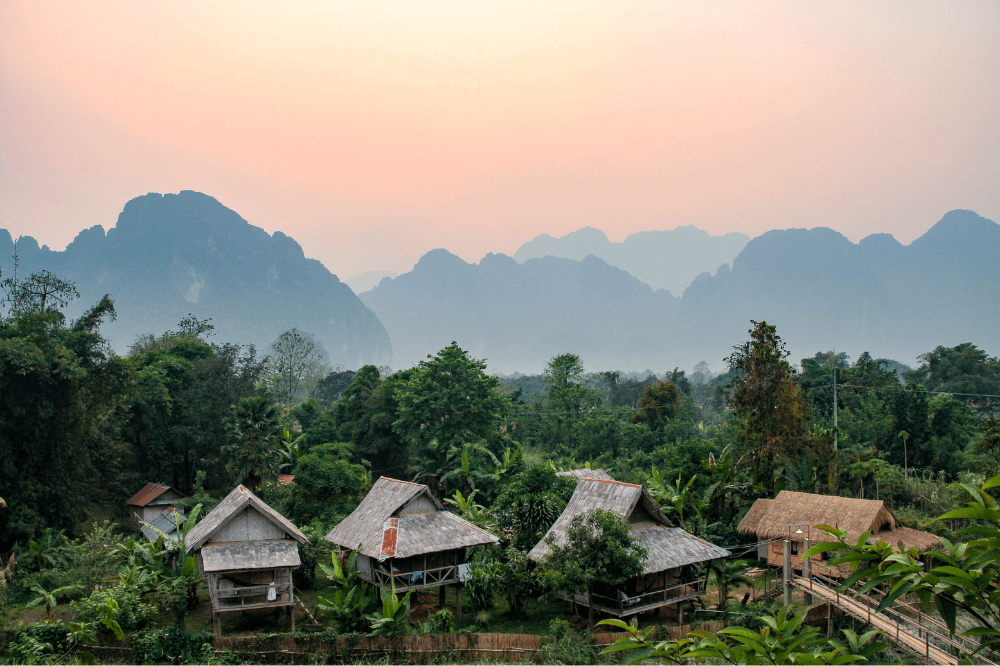
Luang Prabang is another conurbation of dozens of tiny villages that sit in the middle of the Northern Lao region, and several of them have been declared as World Heritage Site by UNESCO. Like Vang Vieng, it is also full of natural wonders, where breathtaking waterfalls and caves mark as its signature attraction. Some of the most visited are Kuang Si Falls, Tat Sae Waterfalls, and Pak Ou caves. Along with an outdoor escape, you can't just miss trying out the local food delicacy, or lam.
Additionally, there are so many natural marvels spread around Laos, that it would just become impossible to list them all at once. Some of these include: Viengxay Caves, Mekong Elephant Park, Bokeo Nature Reserve, Phou Khao Khouay National Conservational Area, and the Nam Ha National Biodiversity Area.
Finishing up our Lao itinerary is a visit to the southern village of Pakse, a small conurbation lying on the bank of the Mekong river and not too far from Thai territory, which is home to historic landmarks and temples, and waterfalls.
5. Indonesia
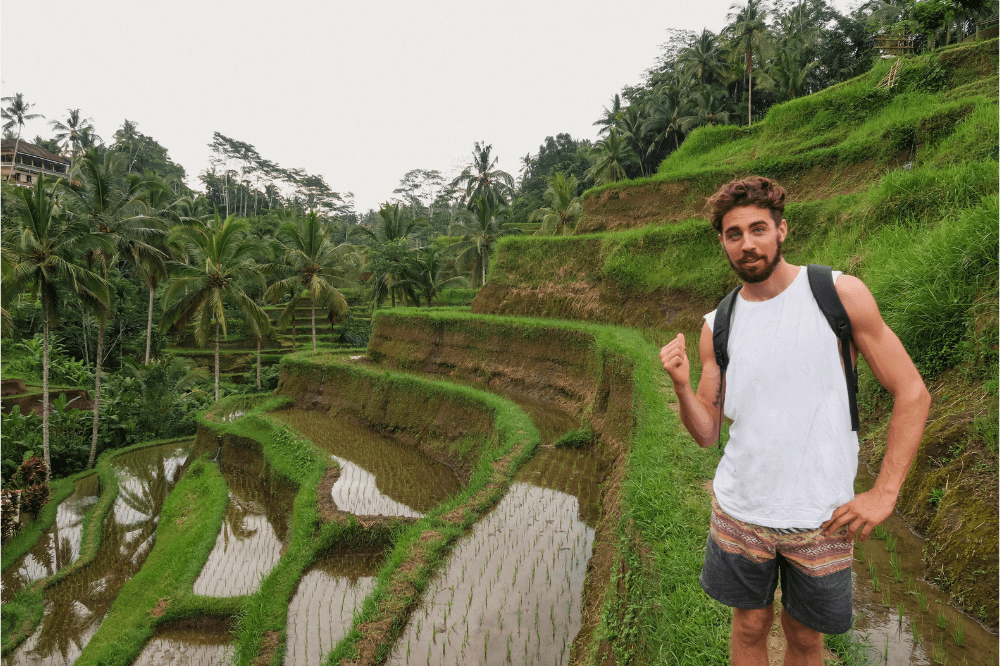
Indonesia is the largest archipelago in the world, and comprised of a little more than 17.500 islands, 6000 of these inhabited, and thus it is regarded not only an attractive backpacking and holiday destination, but also as a surfer's paradise. Mainly a Muslim country, it also guarantees freedom of religion - Catholicism and Buddhism being the 2 other most relevant religions. Its largest islands are Sumatra, Java, Sulawesi, Kalimantan (part of Borneo), and a portion of Papua Island.
We'll start our backpacking journey from Sumatra, as we consider coming in by taking a daily ferry from Singapore. However, several flight routes also efficiently connect Indonesian main hubs, such as Jakarta, its capital, and Bali, to and from international destinations. The northern part of Sumatra is often mentioned as the top tourism spot in the island. The massive number of volcanoes and volcano lakes is what characterizes this region. Thus, if you're an extreme outdoor lover, you've come to the right place! Its administrative capital, Medan, is itself an interesting point of interest, known for its historical heritage and for local cuisine. Roaming around North Sumatra, a point of interest is represented by Lake Toba, the largest volcanic lake in the world and declared as UNESCO Global Geopark. Around Lake Toba, it is possible to enjoy outdoor activities such as rafting, sunbathing on a few beaches, admiring magnificent waterfalls and viewpoints, and get off the beaten path by exploring wildlife.
Hundreds of miles and hours of bus ride away, in the Southern part of Sumatra, its regional capital Palembang, Pagar Alam, Lake Ranau, and Barisan Mountains cover the most part of interesting sites. By taking a ferry ride from Bandar Lampung, it is possible to reach Jakarta in about 3 hours.
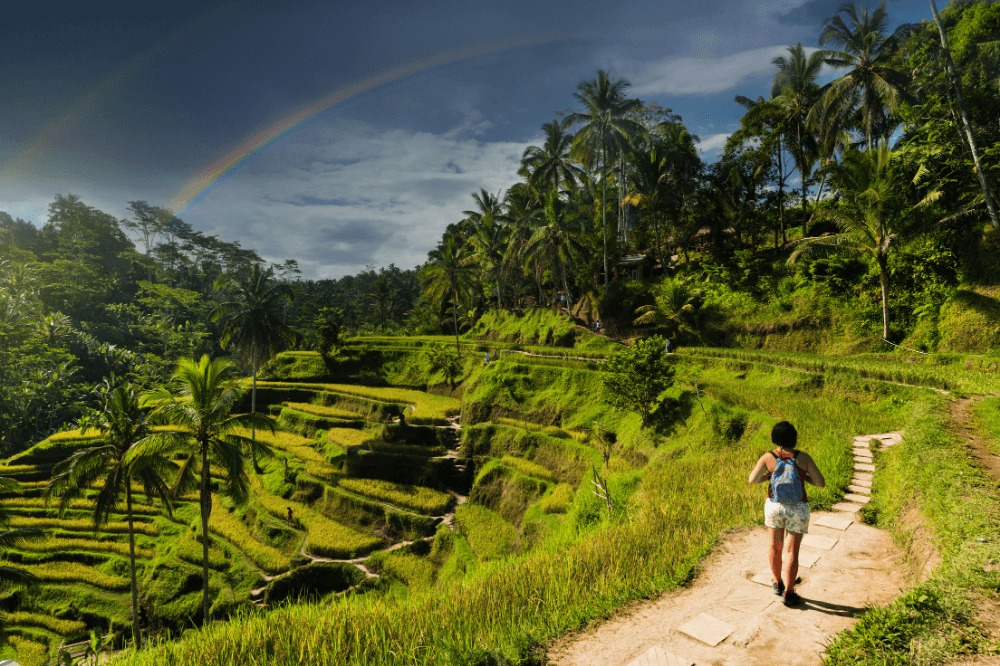
Jakarta is by far one of the largest and most populated city not only of Indonesia, but of the whole globe. During the course of history, several cultures - mainly Chinese, Malay, Indian, European - have influenced its architectural and historical heritage. As with any other metropolis, it also shares common traffic jam issues, thus one of the efficient ways to move around is either by LRT, MRT, Airport Link if you're commuting to/from the airport, taxis, and ojek. In Jakarta, it is possible to have a food experience like never before. Small restaurants and street food stalls are all around the city. Some of the local dishes you don't absolutely want to miss out are: Gorengan (fried food mix), Kerak Telor (hot & spicy omelette), Nasi Goreng, Bebek Goreng, signature Satay sticks, Soto Mie, Nasi Padang, and Gado-Gado. Landmarks include Jakarta History Museum, National Monument, National Museum, Wayang Museum.
It goes without saying that Bali is a world tourist destination, sought after by backpackers and holiday makers alike. Nestled between Java island and Lombok Island, it is no wonder that this tropical paradise attracts each year scores of tourists. The beauty of its incredible surroundings, mountain and coast areas, is what makes such place unique. Tourism is what makes up the most of its economy. Municipalities mainly include the towns of Ubud, Kuta, Denpasar, Canggu.
Taking a domestic flight to Sulawesi, our last Indonesian stop, also concludes it. The coolest attractions here are indeed the Lore Lindu National Park (Central Sulawesi), Rumah Katu Marine Park (Central Sulawesi); Bantimurung-Bulusaraung and Taka Bonerate National Parks (South Sulawesi), Fort Rotterdam (South Sulawesi); Rawa Aopa and Wakatobi National Parks (Southeast Sulawesi); Ban Hin Kiong temple and Bogani Nani National Park in the north. If you're an extreme thrill seeker, then head to Komodo Island and get to watch real-life dragons roam around in the wilderness.
6. Vietnam
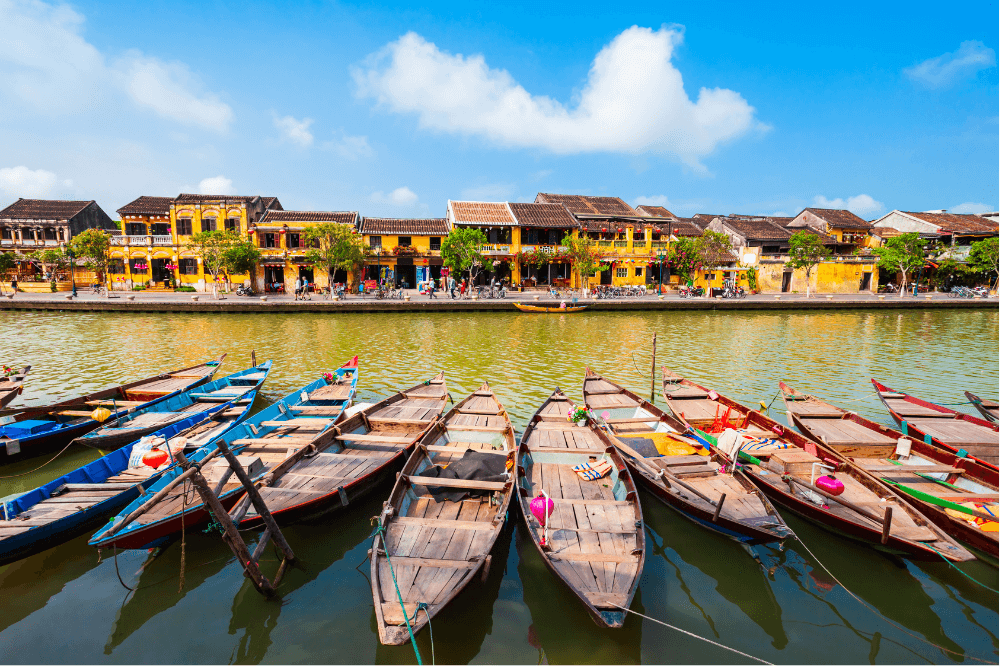
Stretching along a 2000 miles coastline, facing the South China Sea, Vietnam sure has no shortage of natural wonders, beaches, and islands. Once a Communist stronghold, with roots that date back to 1930, and still today retaining influence over everyday government duties, Vietnam is a country that is slowly opening up to the public, and has seen an almost tenfold increase in international arrivals over the course of 2 decades (2000-2020), also thanks to new policies, such as allowing foreigner tourists to roam around freely inside the country. Being home to the largest cave passage, multi-level waterfalls, Pho, and Ha Long Bay, we can't really say that one can get bored to death when in Vietnamese territory.
Following a south-to-north backpacking path, we get started in Vietnam's largest and most populated city, Ho Chi Minh (former Saigon), which serves also as administrative capital. Reaching the city center from the airport, you'll most certainly get overwhelmed by the copious number of motorcycles and moped who literally clog up entire road network. If you're on a tight budget, then booking a bed at one of the hundreds of city hostels will let you save an extra dollar and will ensure you won't run out of money before due date.
Xe Om is one of the most popular way to commute around the city (motorcycle taxi), however the public transportation system is well developed, enough not to incur in unfortunate delays. Taxi and ride hailing apps are also widely available. As always, cuisine variety is never an option. Here's a small insider secret about local culinary preferences: we've spoken with a few inhabitants and, according to them, among their top choices, there are: Pho Tau Bay (Vietnamese beef noodle soup); Hu Tieu - Banh Bao Ca Can (Vietnamese style dumplings, filled with a selection of shrimp, meat, salted eggs, and shiitake mushrooms); Tra Sua Phuc Long (Vietnamese style iced coffee); Banh Xeo (Crispy pancakes). However, it is also possible to indulge yourself in some of the most popular food, including Banh Mi, Pho, Goi Cuon (Spring Rolls), rice Vermicelli, Bun Cha, Vietnamese Beef Stew, Banh Trang Nuong, Bun Cha. Touring the city, stops to include in our itinerary include: Ho Chi Minh City Museum, Reunification Palace, Notre Dame Cathedral; a visit to Vietnam War Chu Chi Tunnels, a widespread network of underground tunnels used by Viet Cong soldiers; the Mekong Delta, a natural ecosystem made of small rivers and islands; Saigon Opera House; and the Ben Thanh Market.
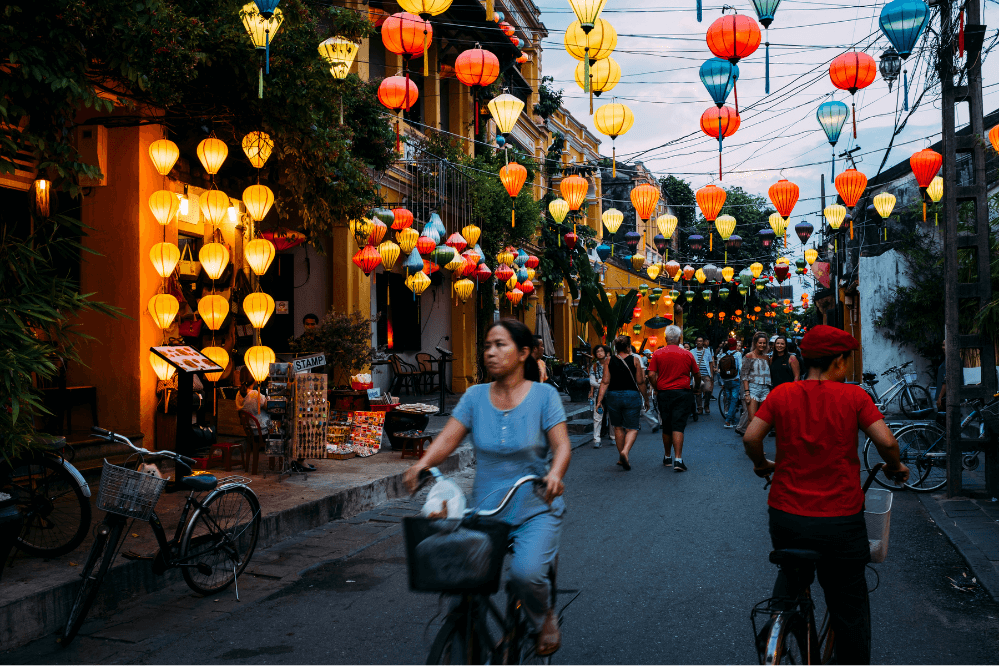
Before proceeding North, an extra stop to take if you love island life, is Phu Quoc, which lies on the Southwestern point, nearing Cambodia's mainland. Following a northbound route, our path takes us respectively to the cities of Da Lat, Hoi An, Da Nang, Ha Noi, before approaching Ha Long Bay.
The best way to reach Da Lat is by hopping on a regional flight that will take less than 1 hour to get you to destination. Alternatively, purchasing a bus fare will let you drop off for cheaper, if you don't mind the extra few hours commute. Completely surrounded by nature, the "City of Thousand Flowers" is a beloved place to visit for backpackers. Its environment is comprised of its signature pine woods, and Mimosa and Marigold flowers, and its architecture is influenced by French colonialism traits. Bao Dai's Palace, Crazy House, Da lat Market, Xuan Huong Lake, and magnificent waterfalls, are just some of the hottest locations.
Hoi an, a UNESCO world heritage site, or commonly referred as The Venice of the East, is inhabited by 120.000 locals that call it home all year long. The presence of countless water canals is what mostly makes up its iconic scenic view. A few museums are open for public: the Museum of History and Culture, the Museum of Trade Ceramics, the Museum of Sa Huynh Culture, and the Hoi An folklore Museum. Hoi An's signature delicacy is the Banh Mi, a vietnamese style sandwich made of meat, herbs, eggs, vegetables, rolled in a French style baguette bread.
A few miles north of Hoi An, lies the main city of Da Nang, which represents also the 3rd most populous city. Due to its relevant historic heritage, Da Nang is today regarded as an important tourist hub, as showed on international arrivals statistics: in fact, the original settlement site - Mỹ Sơn - dates back to more than a thousand years. Top activities to check out: hiking around Marble Mountains and the Son Tra peninsula, enjoying Non Nuoc beach life, and try out local food mainly consisting of Mi Quang, Banh Xeo, and Bu Cha Ca.
Switching from third to second largest city, we finally head over Ha Noi, followed by a 2-3 day trip to Ha Long Bay. Ha Noi has a rich historic background, with human settlements that date back to the Paleolithic. Once the capital of the Socialist Republic of Vietnam, today Ha Noi is quickly developing into a modern city - boasting art galleries and cafes (which somehow have become integrated part of the Ha Noi people culture) - with real estate and skyscraper development projects taking over the city. Old Quarter is the best example of a rapidly-evolving Vietnamese culture, with its countless coffee shops and restaurants' ambience. Highlighting a 3-5 days visit are: Museum of Fine Arts, West Lake, Women's museum, and Viet Cong Thong Nhat. Then, by seaplane, it will take less than 1 hour to arrive to Ha Long Bay, bus connections also run through the two spots. There, amazing views, folklore, caves, kayaking, national parks are awaiting you.
7. Myanmar (formerly Burma)
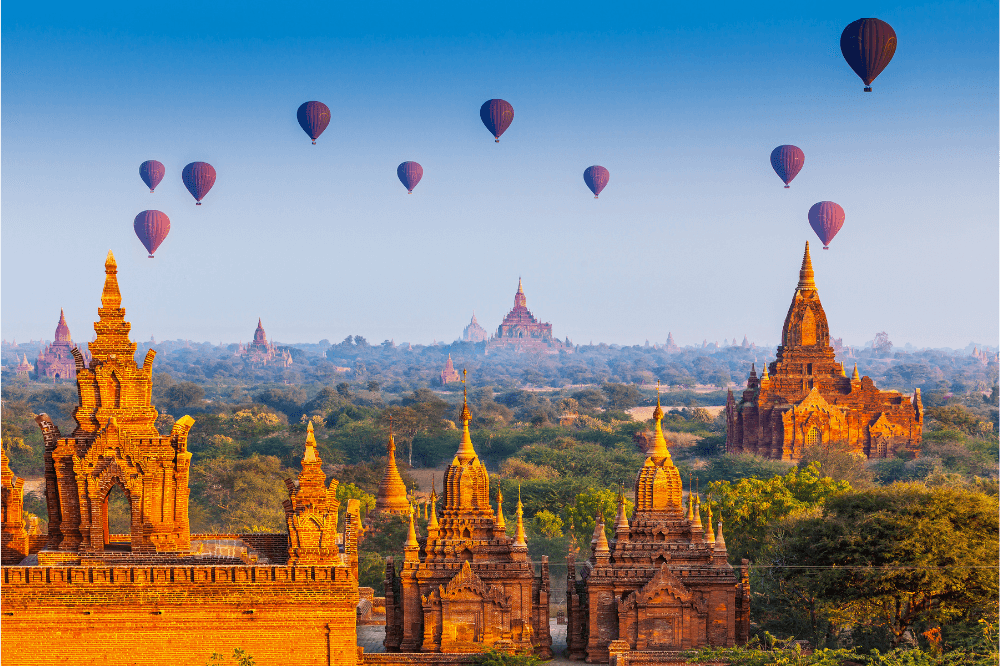
Myanmar is a country that is still preserving itself from mainstream tourism itineraries, although recent years have seen an increasing number of arrivals, fostered by a booming in worldwide leisure and travel activities. It is worth mentioning that as of today, it is quite troublesome to enter the country by land/sea - due to internal Government restrictions - that also explains why air transportation is the most preferred way to enter Myanmar. Bordered by Bangladesh, India, China, Laos, and Thailand, and facing the Bay Of Bengal and the Andaman Sea, it has been depicted since time immemorial as a multiethnic nation, which more than often fueled long-standing conflicts, which are still ongoing in some regional areas - see Shan region.
Today, tourism is playing an important role towards the economic development of the military-driven state. A few major religious practices exist, with the leading religion being Buddhism. Myanmar is a medium-safe country for backpackers, although it is quite advisable to away from conflict ridden regions, in order to avoid certain crimes such as kidnapping or ransom requests. Flights and bus rides are the safest ways to commute, although opting for the latter might require extremely long commuting times. The main recommended backpacking spots are large settlements like Yangon, Mandalay; its capital Naypyitaw; Bagan, and Mon State. Smaller isles can be found on the Southern tip of the country, which mainly attract neighbor visitors. Kyat is its currency; as of time writing, 1 USD can be exchanged for about 1400 kyat. Mohinga, a rice noodles based soup is the most recognized Burmese dish, although local specialty ingredients are greatly influenced by regions' geographical positions. Burmese curry, tofu noodles, rice based dishes, fish or meat soups are also a staple for locals.
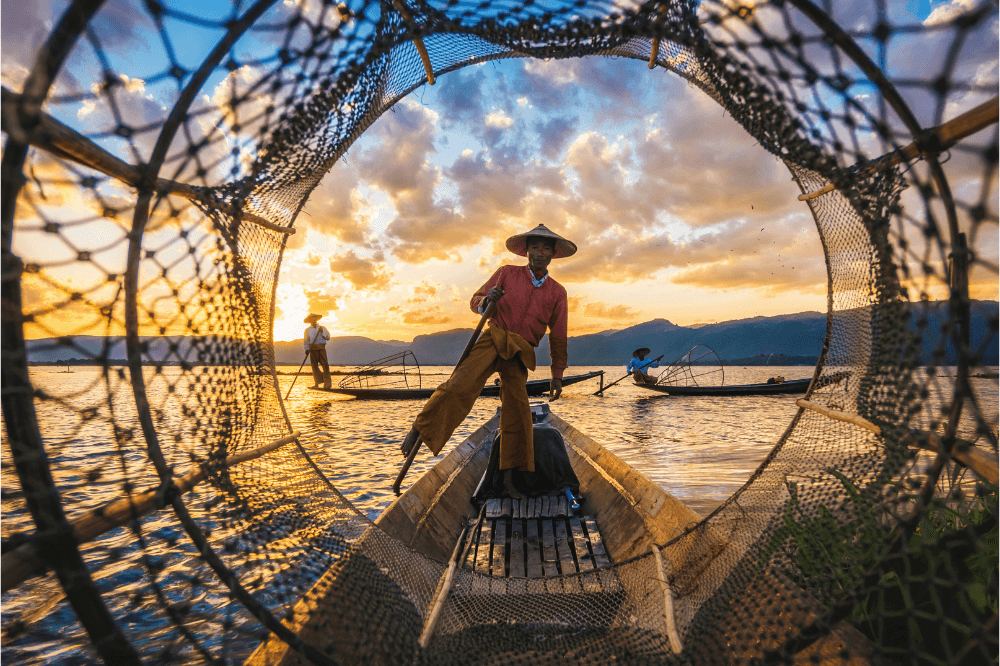
Also for Myanmar, we'll arrange an hypothetical itinerary which starts from the south, home to hundreds of islands standing in the Andaman Sea, all the way up. The stops being Mandalay, Yangon, Bagan, Bago, and Tachileik.
Yangon serves as the most important hub of the country, and the colonial-era architecture is still today the beating heart of the city. In fact, two of the most famous Pagodas, Schwedagon and Sule Pagoda, are the most visited. As a mass rapid transit system is missing, but scheduled to be built in the following years, the main options here for a safe commute are comprised of public buses, private cars, and railway. Other Pagodas worth visiting if you're not rushing are Kyike Ka San and Chauk Htat Kyi Pagodas. If you're fascinated by museums intellectual atmosphere, then have a look at the National Museum. If you're craving an outdoor stroll, People's Park will suit you.
Bago is our extra stop: if you're in for a 1-day excursion, and you've loved visiting those majestic Yangon temples, then you should definitely check out this village, which is not too far from Yangon (about 1 and half hours drive north), where you can get to see some more.
350 miles north, Bagan is definitely a place you definitely don't want to miss if you're heading to Myanmar. It is indeed the most iconic and notorious village in the whole state. Ever looked those shots on socials of perfect sunsets, surrounded by air balloons and ancient temples? You got it, that's Bagan. Originally home to some 10.000 temples, today only roughly a quarter has survived since construction. With its history dating back to 849 AD, Bagan is one of the most antique settlements in Myanmar, and, it goes without saying, its religious epicenter. All of these temples would deserve its own time, however we know that this is not always possible due to obvious timing reasons, so we'll list the most important ones: Ananda Temple, Bupaya Pagoda, Dhammayangyi Pagoda, and Gawdawpalin Temple. If you're coming from Mandalay or Yangon, the city is reachable via railway or bus. If you're flying, the airport efficiently serves tourists.
Mandalay, together with Yangon, represents one of the largest cities in Myanmar. Founded some 150 years ago, it has been Myanmar's capital before Yangon. This city was Burma's cultural and educational center, and, to some extent, it is still today, hosting some of the most prestigious universities in the nation; as well as being an important Buddhism site. A 2-day visit will allow you to explore the few relevant landmarks, Kuthodaw Pagoda, Palace Wall, Mandalay Palace, and to have a stroll and try local food in Zaycho's city market.
Tachileik is off the beaten path, on the Eastern part of Myanmar, near the Thai border, up on the hills. Temples make up the main landmarks here. It also constitutes an entry point to the country for Burmese people. Tum Luang-Khun Naam Naang Noorn Park is also accessible from the city.
8. Cambodia
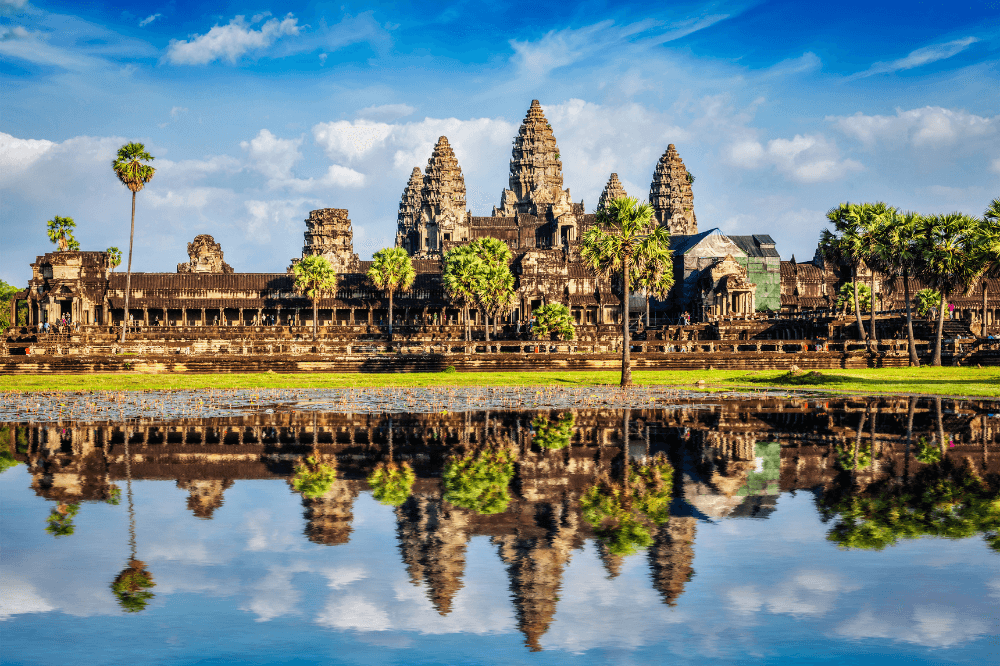
Facing the Gulf of Thailand, and being surrounded by Thailand, Laos, and Vietnam, Cambodia is not short of marvelous place and heritage, some of which are direct remains of the architecture built by the Khmer Empire, which had ruled the territory for more than 6 centuries. Cambodia's beauty is comprised of tropical islands, pristine beaches, historical landmarks, with rainforests and jungles covering more than 50% of its land area. Its official currency is the riel, although its neighboring currency, Thai baht, and US dollars, are widely accepted by businesses; it is also possible to withdraw these currencies from common ATM.
There are several spots from where one can get into the kingdom; one of these is by walking across the thai-cambodian Aranya Prathet-Poipet border (1$ will get you a train ticket to here from Bangkok); quite common is also flight commute, with Phnom Penh and Siem Reap airports being the busiest hubs. Also for Cambodia, the quickest ways to move around towns is by hiring a motorcycle, hopping on a Tuktuk, or hiring a motorcycle taxi. In this country, it can be extremely inexpensive too; as well as accommodation. The cost of a single-entry visa, valid for 30 days, is of 30 USD. Food delicacies include: Fish Amok, Lok Lak, and Khmer Curries. It is not uncommon to find Thai, Vietnamese, Chinese, or Western recipes on restaurant menus. We'll explore the main backpacking routes covering Koh Rong/ Sihanouk, Siem Reap, and Phnom Penh.
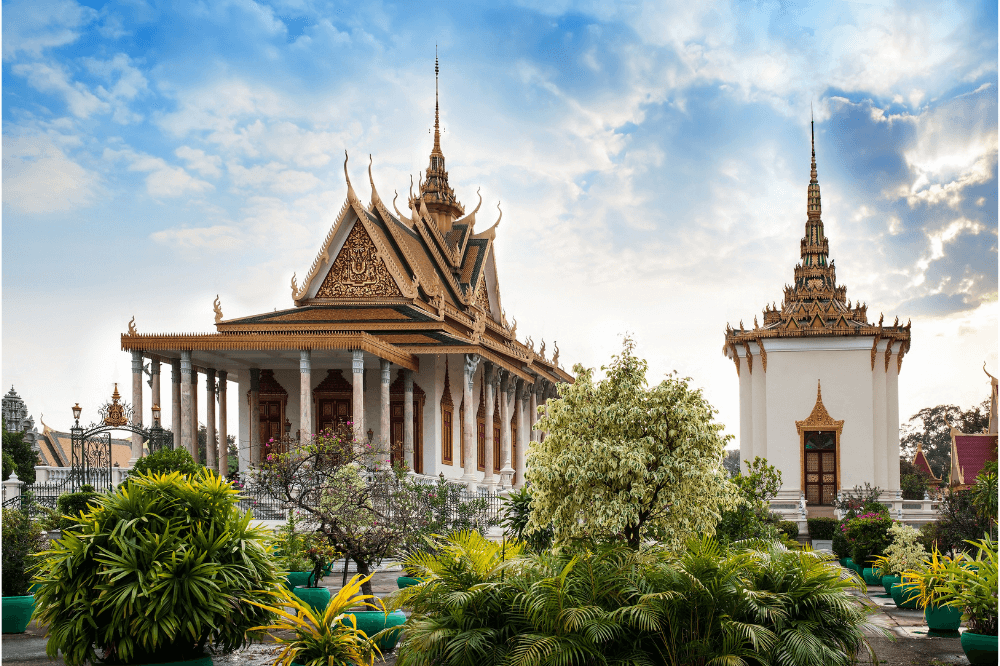
Starting out at the Thai-Cambodian border, the safest way to reach Siem Reap is by hiring a private car chauffeur that will cover a distance of about 2 hours driving. Prices can vary greatly, in the range of 20-50$, however a common way to save a few dollars is by splitting the bill with people you're traveling with. The city center itself is quite simple, and resembles the appearance of other Cambodian typical villages. Renting a motorcycle is the cheapest and funniest way to both explore the town, and to head to Angkor Wat, the largest religious buildings complex in the world. 1 day spent visiting the town, and 1 day spent visiting Angkor Wat should be sufficient to quench your wanderlust thirst. While visiting the town, popular spots include its night market and pub street, try out exotic food such as fried tarantulas and bugs, visit the War Museum, and its silk farms.
We strongly recommend spending 1 full day visiting all 3 Angkor Wat temple complexes (Angkor Wat, Angkor Thom, Bayon temples). Watching the sunset there can become an extraordinary out-of-this-world experience!
Phnom Penh is the administrative capital of Cambodia, and spending 2-3 days is considered fair. Royal Palace and Silver Pagoda are the most loved backpacking spots. Visiting the National Museum and admiring colonial-style architecture is also commonly appreciated. As the city was affected by a genocide, several monuments and buildings are spread across the city to commemorate the tragic event, such as the Genocide Museum.
If you fancy a coastal or beach environment, away from urban scenarios, then head to Sihanoukville, where beaches stretch for hundreds of miles, and blend with the local flora, and the nearby Ream National Park.
9. Philippines
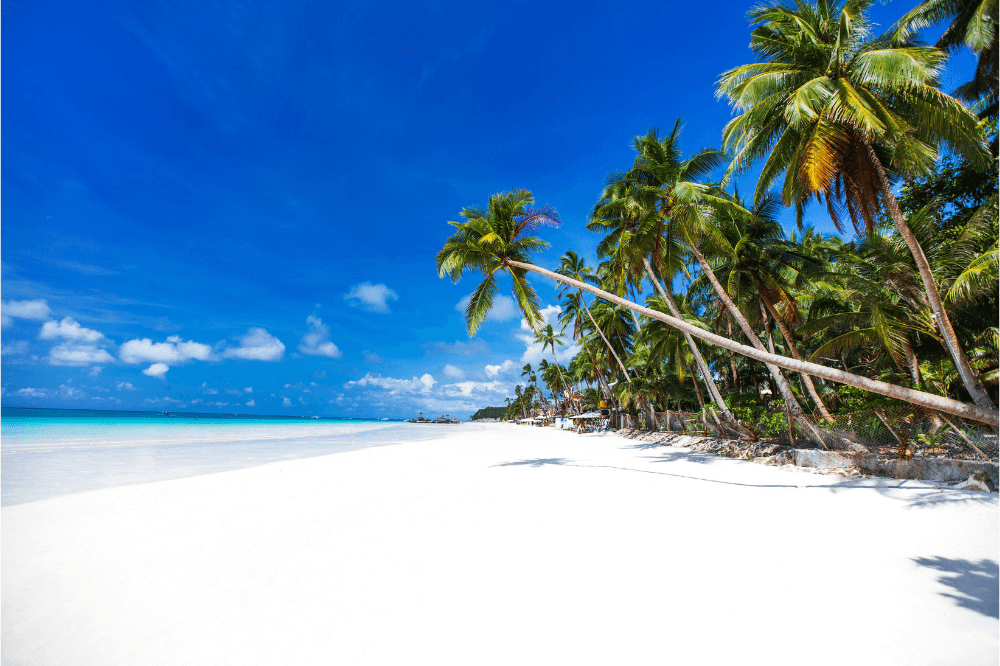
Stretching along the Southwest Pacific, and comprised of thousands of tiny and large islands, the Philippines archipelago resembles the collective imagination of a perfect tropical heaven. White sand beaches, picture-perfect palm trees, crystalline water, a friendly local environment, and a budget-friendly standard of life are what foster this attribute. Tourism in the Philippines has boomed in the recent years, with a 2x foreign tourist arrivals growth rate in 10 years. Fascinated by the Filipino lifestyle, many are the backpackers that even decide to call this country home for a short or long period of time. Most of them start out their journey in the capital city, Manila, stopping by Batangas or other Luzon's full of history towns, and then fly to other major tourist spots and islands, few of these being Cebu, Boracay, Palawan, Mindoro, Bohol. Philippines' official currency is the peso (PHP), however in large metropolitan areas, you'll find that some shops and large corporations also accept US dollars. In addition to Adobo, one of the most enjoyed Filipino food, a wide array of local dishes, which also make up inhabitants' staples, include Sinigang, Balut, Sisig, Tinola Manok, Nilaga, Calgareta, Lechon, Menudo, Afritada. let's get started on our Filipino adventure trail.

Manila, the largest city and capital, second only to Quezon city for number of inhabitants, dates back to more than 5 centuries of history, and founded by Spanish colonials. 2-3 days is the typical duration of a visit. The city is riddled with historic and religious landmarks, especially Christian churches. Key places not to miss: Fort Santiago, National Museum of the Philippines, Baluarte de San Diego, Cathedral of the Immaculate Conception. The city is served by an MRT system, which efficiently integrates to other transportation, such as buses and taxis. Having a stroll at Manila promenade and watching the nice sunset represents a good way to end your day.
Regular bus rides are available from Manila to Batangas, at just 150 pesos (+- USD3). Thanks to its several vulcanic areas and a charming Taal Heritage Town, the town is a famous attractions among Manila holiday makers. Its airport is also one of the busiest in the archipelago.
From there, ferry rides every 2 hours connect the city of Batangas to Mindoro Island. Scuba diving activities are very popular among backpackers visiting. Nature and wildlife also thrive, with white sand beaches, waterfalls, and jungle landscapes.
In order to reach Cebu, the fastest way is to head back to Batangas and get a flight from there. That's the cheapest and most convenient way, and this will also allow you to explore Bohol after you're done with Cebu. Cebu island itself is quite large, and this leaves you enough places to explore, overall 5 to 10 days spent there is the ideal choice. Tall mountains as well as wilderness spots, beaches and mangrove forests can be found thrughout the island. Same as Cebu, Bohol as well is an unspoiled tropical heaven, much famous for its Chocolate Mountains, site that has allowed Bohol to become popular on a world scale. Numerous churches and colonial-era elements can also be found.
Last, but not least, Palawan completes our SEA itinerary. Palawan is gaining massive worldwide attention and is experience a booming growth of tourists arrivals. The reasons? Being home to the most beautiful coral reefs in the world, wild jungles, lagoons, a unique ecosystem, and unmatched views. El Nido, Coron, and Puerto Princesa are the trendiest destinations. Staying there 3-5 days is, to say the least, essential if you don't want to miss out on all these antural beauty.
Bonus itinerary: Brunei
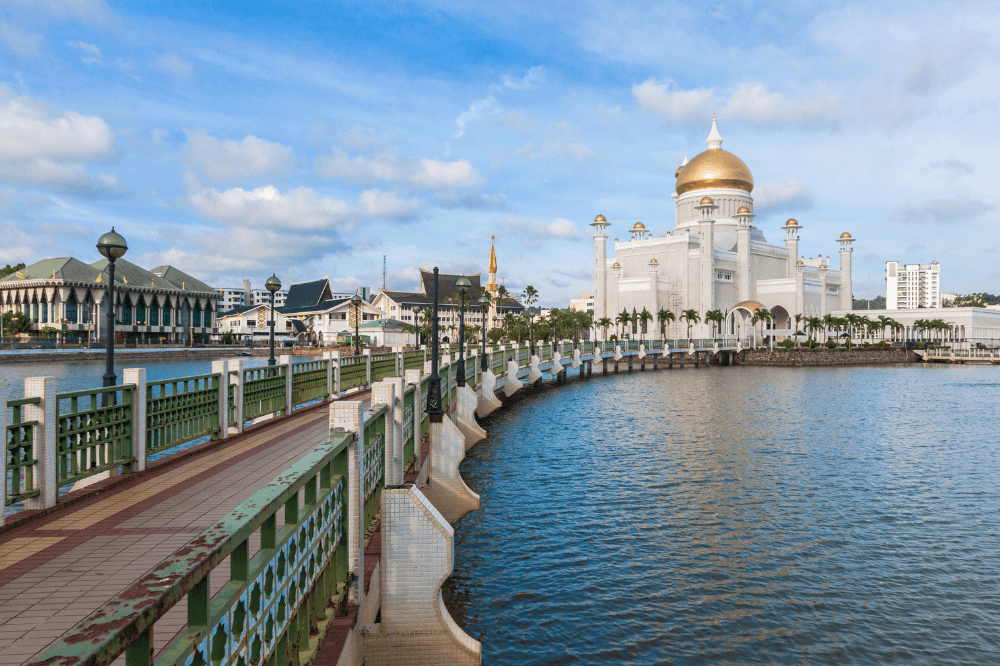
Located on Borneo Island's north coast, Brunei is a Sultanate state and shares the main island territories along with Indonesia and Malaysia. After obtaining its independence in 1984, this tiny country has seen significant economic growth during the past decades, thanks in part to its remarkable natural gas reserves; Islam is the main religious practice. If you're looking for the road less traveled, then you'll definitely want to check Brunei out. Reaching Brunei is quite a straightforward process, as there are several regular direct flight connecting it to various South East Asian countries, such as Malaysia, Singapore, and Thailand. If you're just planning to highlight the main hotspots, then 3-5 days are essential to a detailed visit, in order to avoid last-minute rush, to say the least.
As with other same-sized city-states, its capital city, Bandar Seri Begawan, is the place to go. Even though the cost of living might not be as low as its neighboring countries, it is still worth mentioning that it's not as expensive as compared to other countries. The most convenient way to explore the city is by hopping on a boat taxi, or a public bus. Main landmarks include: Omar Ali Saifuddien Mosque, Royal Regalia Museum, Arts and Handicrafts Center, Jame' Asr Sultan Hassanal Bolkiah, Gadong night market, and Tasek Lama park. The country's ultra low crime rate will ensure you that everything goes smooth and according to plans, and will make possible to roam around during daytime as well as nighttime. Part of its local cuisine includes Malaysian style and Chinese style dishes.
We hope we've gathered enough information to get you through your sought-after South East Asia backpacking trip. Enjoy!
